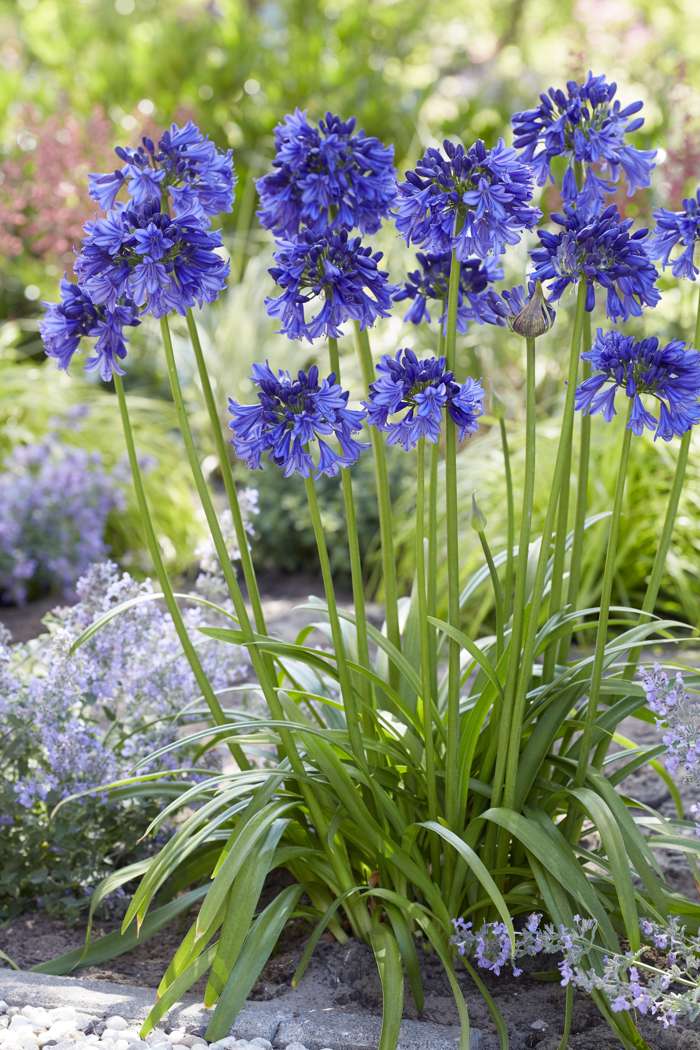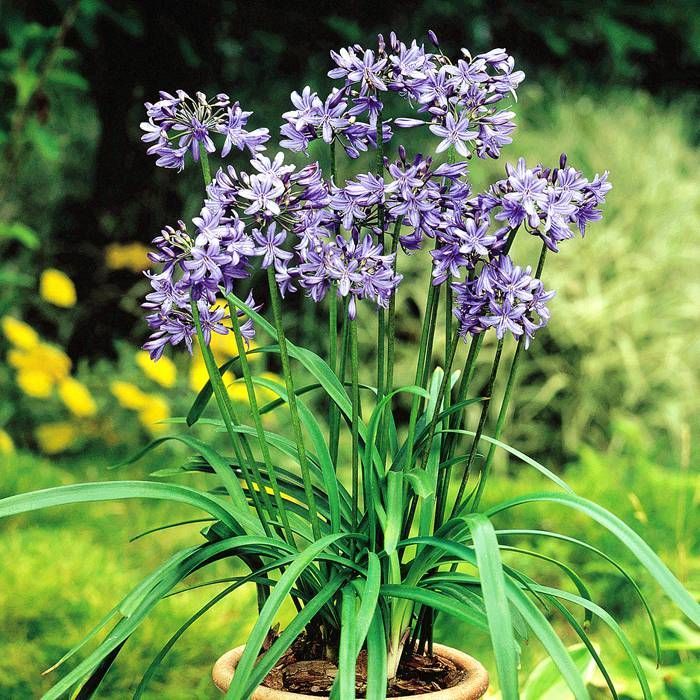Agapanthus Companion Plant Kingdoms: Perfect Pairings for Your Yard
Agapanthus Companion Plant Kingdoms: Perfect Pairings for Your Yard
Blog Article
Unleashing the Secret to Effective Agapanthus Growing: Tips and Techniques for a Flourishing Yard
In the world of gardening, cultivating agapanthus successfully needs a calculated method that encompasses numerous facets of plant treatment. By comprehending the nuances of agapanthus growing, one can produce an atmosphere where these plants prosper and grow perfectly.
Planting Agapanthus: Best Practices
When planting Agapanthus, appropriate dirt preparation is crucial for guaranteeing successful development and development of these lovely blossoms. Agapanthus, frequently referred to as Lily of the Nile or African lily, flourishes in well-draining soil with a somewhat acidic to neutral pH degree - Agapanthus. Prior to planting, it is crucial to modify hefty clay dirts with raw material such as garden compost or peat moss to boost water drainage and offer vital nutrients for the plants
To grow Agapanthus, pick an area that receives complete sunshine to partial color, as this will certainly promote healthy and balanced growth and abundant flowering. Dig a hole twice the size of the plant's root round and put the Agapanthus at the same depth it was previously growing. Gently backfill the hole with dirt, weighing down strongly to get rid of any air pockets around the origins.
Water the newly planted Agapanthus extensively and continue to maintain the dirt uniformly damp, particularly during the plant's energetic growing season. Agapanthus. Applying a well balanced fertilizer once a month can additionally support the plant's growth and blooming. By adhering to these ideal practices for planting Agapanthus, you can create a spectacular display screen of these captivating blossoms in your yard
Perfect Soil Conditions for Agapanthus
For ideal development and blooming success of Agapanthus plants, making certain the dirt conditions are suitable is vital. Agapanthus grows in well-draining dirt with a somewhat acidic to neutral pH degree varying from 6.0 to 7.0. This kind of soil permits sufficient water drainage, protecting against waterlogging which can lead to root rot. To enhance soil water drainage, consider including natural matter such as garden compost or peat moss when preparing the growing site. Furthermore, Agapanthus chooses dirt that is rich in nutrients, so including a balanced plant food throughout the expanding season can advertise healthy and balanced growth and vivid blossoms.

Watering and Fertilizing Tips
To make certain healthy and balanced development and vivid blossoms, correct watering and feeding strategies are necessary for effective Agapanthus cultivation. Agapanthus plants gain from regular watering, especially during the expanding season. It is recommended to water deeply when a week, guaranteeing the soil is moist but not saturated. Throughout heat or in pots, more regular watering may be required to stop the soil from drying entirely.
When it involves fertilizing Agapanthus, a balanced plant food with equal parts nitrogen, phosphorus, and potassium can be used in the springtime to promote healthy growth and blooming. Slow-release plant foods are optimal for offering nutrients progressively over an extensive period. Stay clear of over-fertilizing, as this can cause extreme foliage growth at the expense of blooms.
Additionally, including raw material like garden compost into the soil can boost nutrient degrees and enhance soil structure, assisting in the general health of the Agapanthus plants. By complying with these watering and fertilizing tips, gardeners can guarantee their Agapanthus plants grow and create stunning displays of flowers.
Trimming and Deadheading Methods
Correct trimming and deadheading techniques play a vital role in keeping the health and wellness and looks of Agapanthus plants, matching the essential methods of watering and fertilizing for successful farming. Pruning Agapanthus includes getting rid of spent blossom heads, yellowing or dead leaves, and click here for more info total shaping of the plant to promote far better development. Deadheading, the procedure of removing discolored flowers, not just boosts the plant's appearance yet additionally encourages further flowering.
When deadheading Agapanthus, it is advisable to clip off the blossom stem at the base utilizing sharp, tidy shears. This process redirects the plant's power from seed production back right into root and foliage development, promoting a healthier and extra durable plant. Regular deadheading can expand the blooming period of Agapanthus and protect against self-seeding, which can result in congestion.
In terms of pruning, Agapanthus typically gain from a light trim after blooming to clean up the plant and motivate fresh development. Cutting back the spent blossom stems and removing any type of damaged or dead foliage assists keep the plant's vitality and overall appearance. Nevertheless, it is important to stay clear of reducing into the my explanation crown of the plant, as this can weaken its health and wellness.

Protecting Agapanthus From Vermins and Diseases
Applying effective insect and illness monitoring techniques is vital to protecting the health and wellness and vigor of Agapanthus plants in cultivation. One usual bug that impacts Agapanthus is the Agapanthus borer, a caterpillar that passages into the plant, creating damage to the flowers and leaves.
Along with parasites, Agapanthus are vulnerable to conditions such as origin rot and fungal leaf spots. These concerns can often be protected against by making certain appropriate drainage and staying clear of overwatering. If indicators of illness show up, influenced parts of the plant need to be quickly gotten rid of to avoid additional spread. Fungicides may likewise be made use of as a treatment measure, complying with the manufacturer's directions carefully. By remaining watchful and addressing insect and disease issues without delay, gardeners you can look here can help their Agapanthus flourish and prosper.

Conclusion
To conclude, effective farming of agapanthus calls for correct planting techniques, optimal soil problems, appropriate watering and fertilizing, regular pruning and deadheading, and protection from insects and illness. By complying with these tricks and ideas, garden enthusiasts can make sure a prospering yard filled up with lovely agapanthus blossoms. Agapanthus. Bear in mind to preserve consistent care and focus to detail to advertise the health and longevity of these stunning plants
When growing Agapanthus, correct soil preparation is vital for guaranteeing effective growth and advancement of these beautiful flowers.Water the recently grown Agapanthus thoroughly and proceed to keep the soil evenly moist, particularly throughout the plant's active growing season.For optimum development and growing success of Agapanthus plants, ensuring the soil conditions are ideal is crucial. When growing or hair transplanting Agapanthus, make sure the soil is well-prepared to offer the essential structure for the plants to develop themselves successfully. One common pest that influences Agapanthus is the Agapanthus borer, a caterpillar that tunnels into the plant, triggering damage to the leaves and flowers.
Report this page